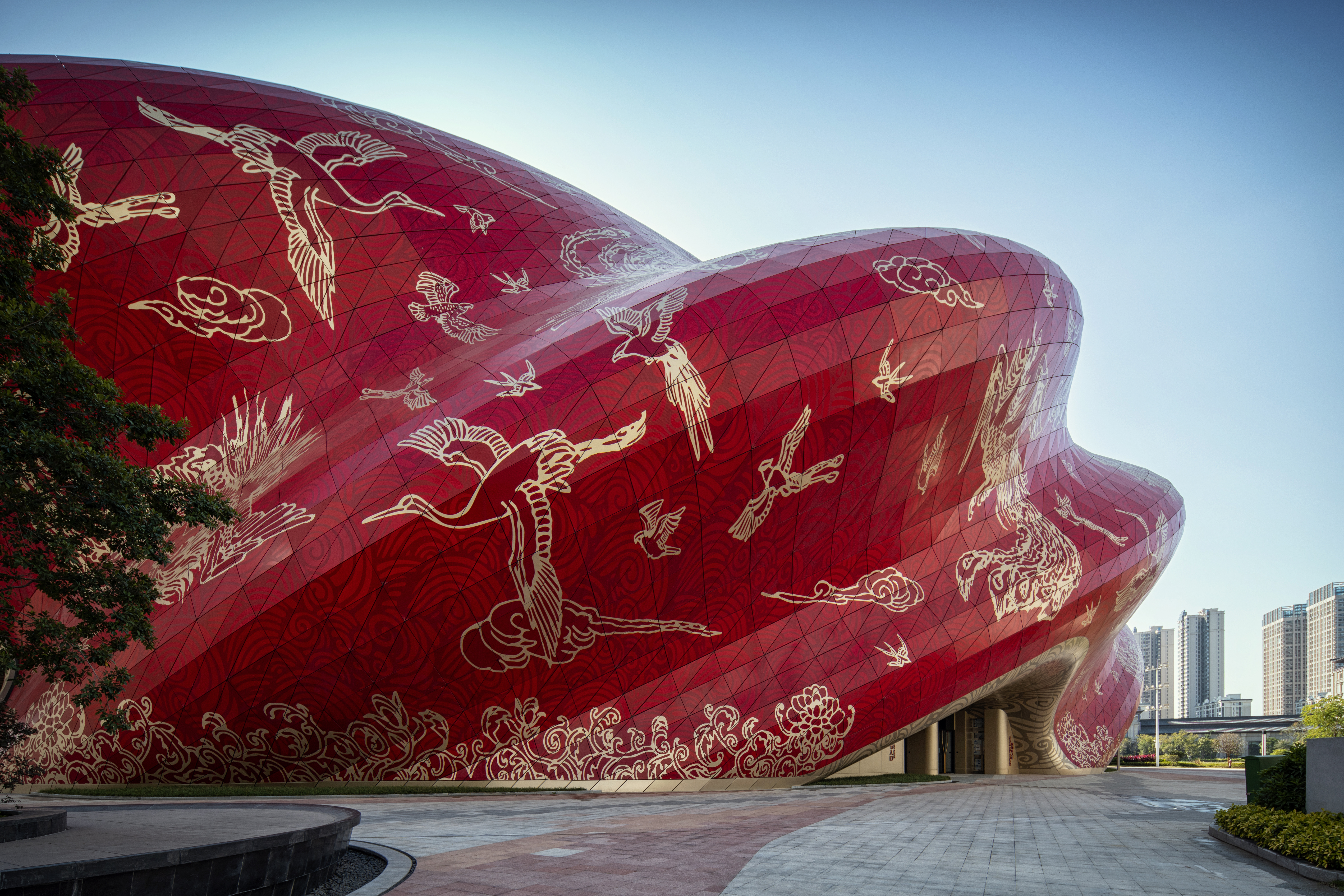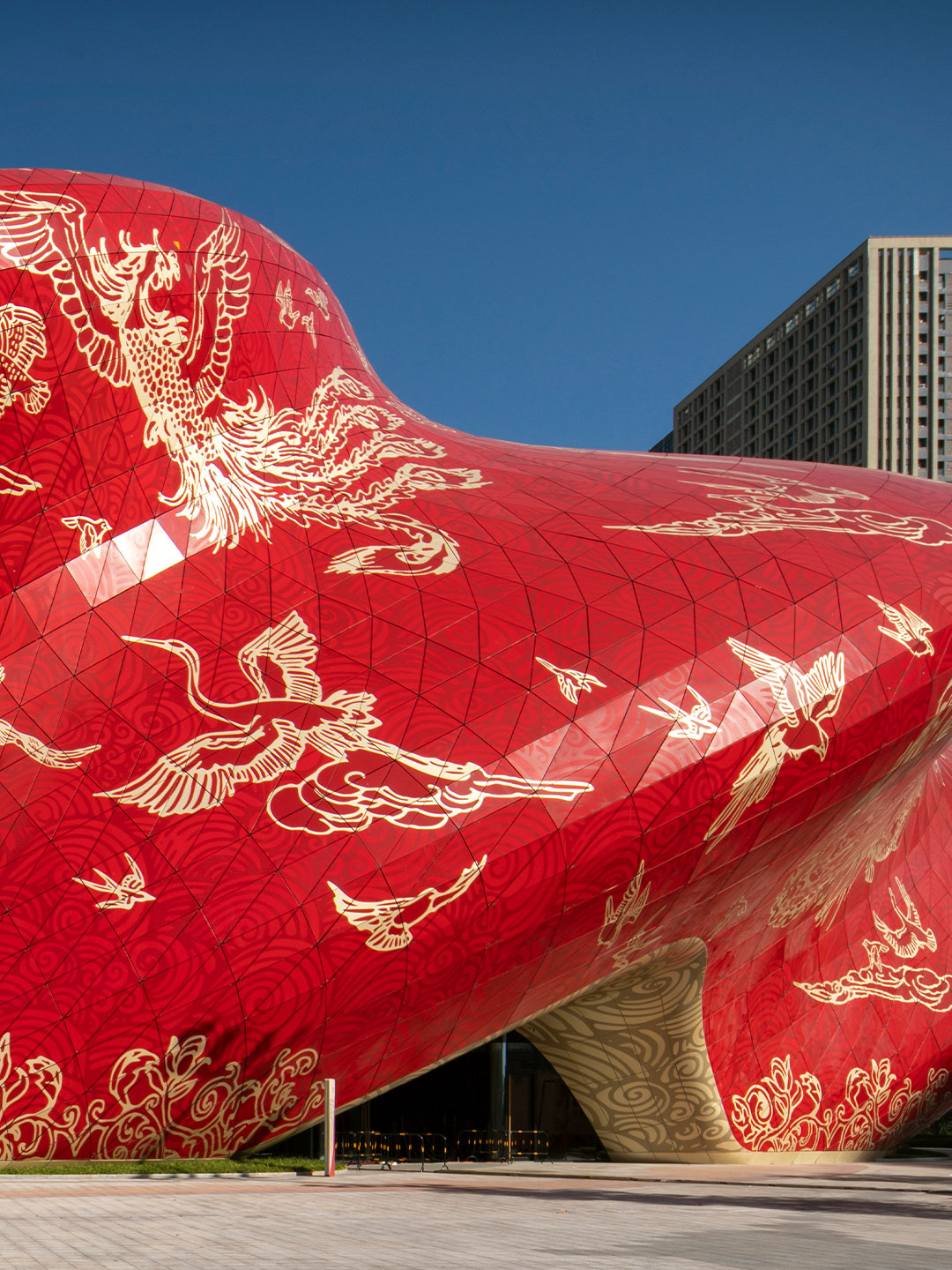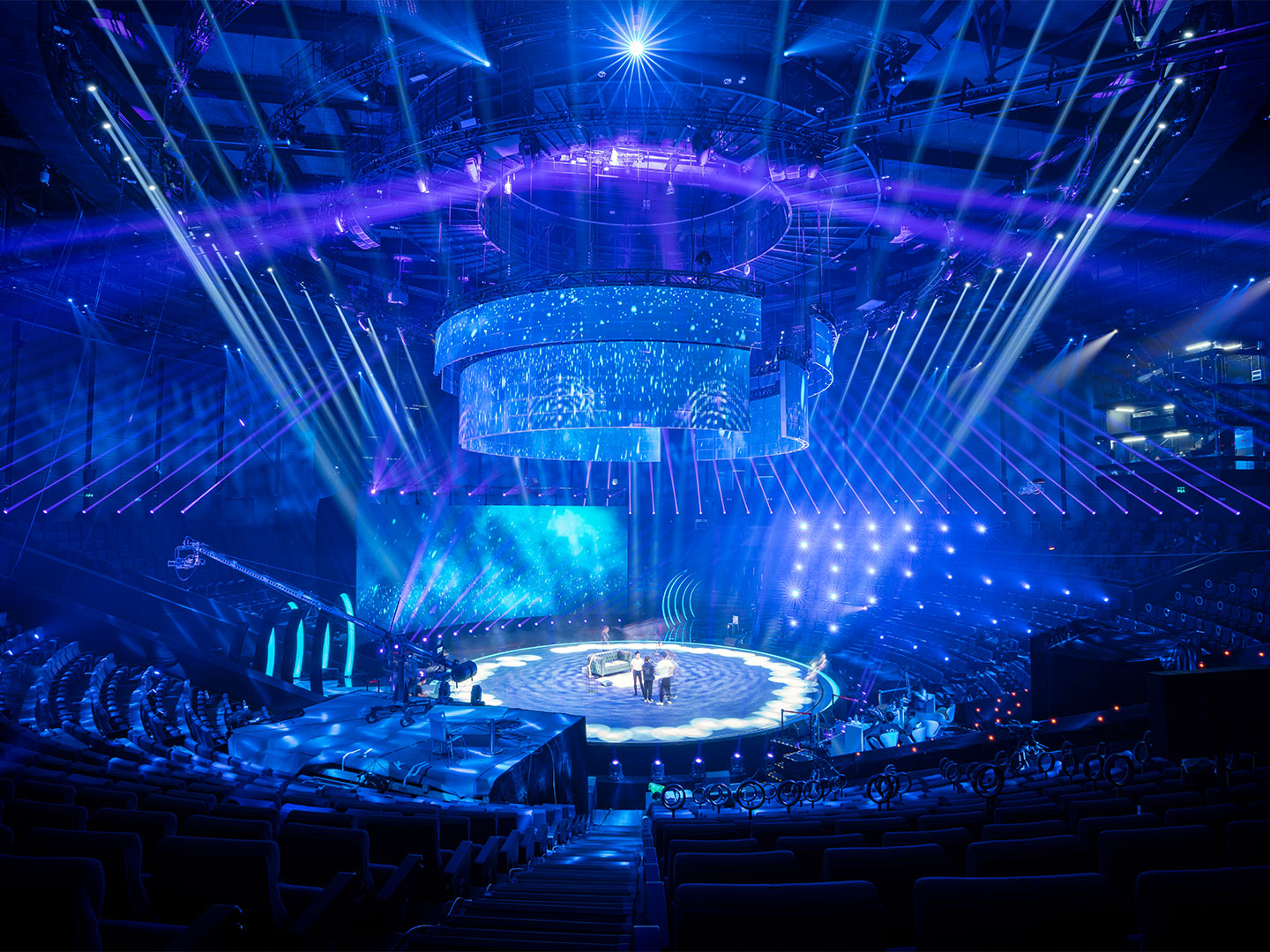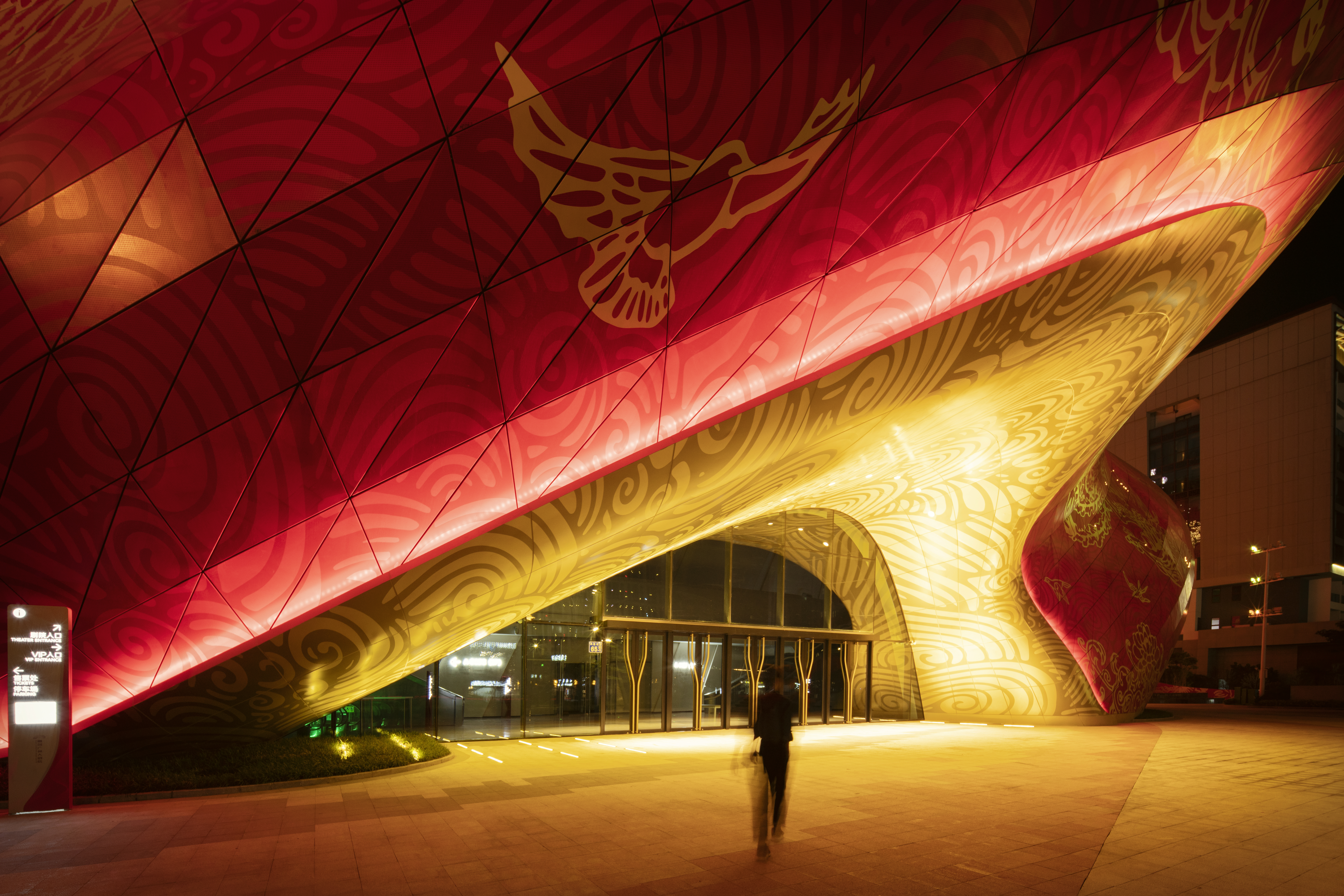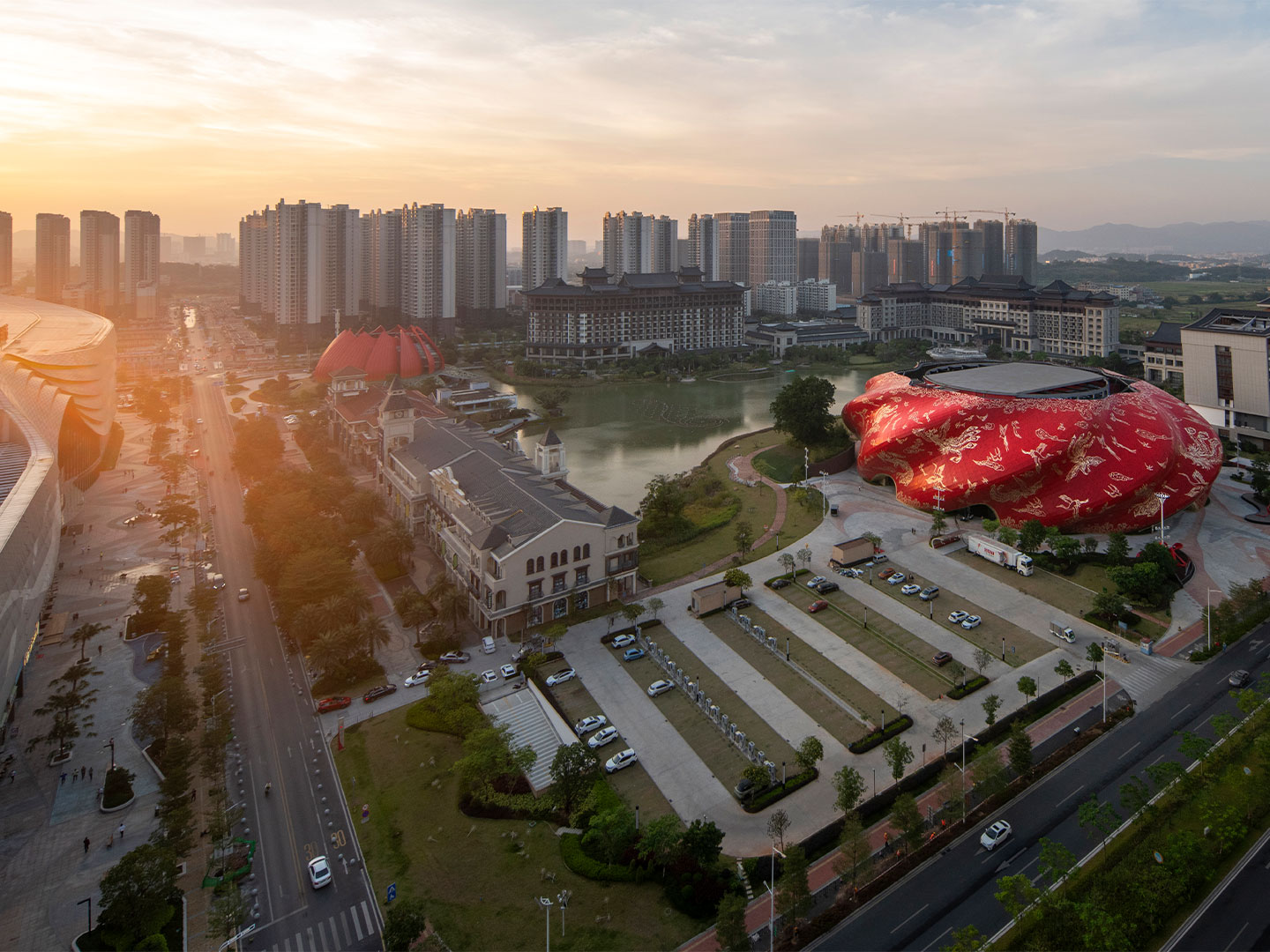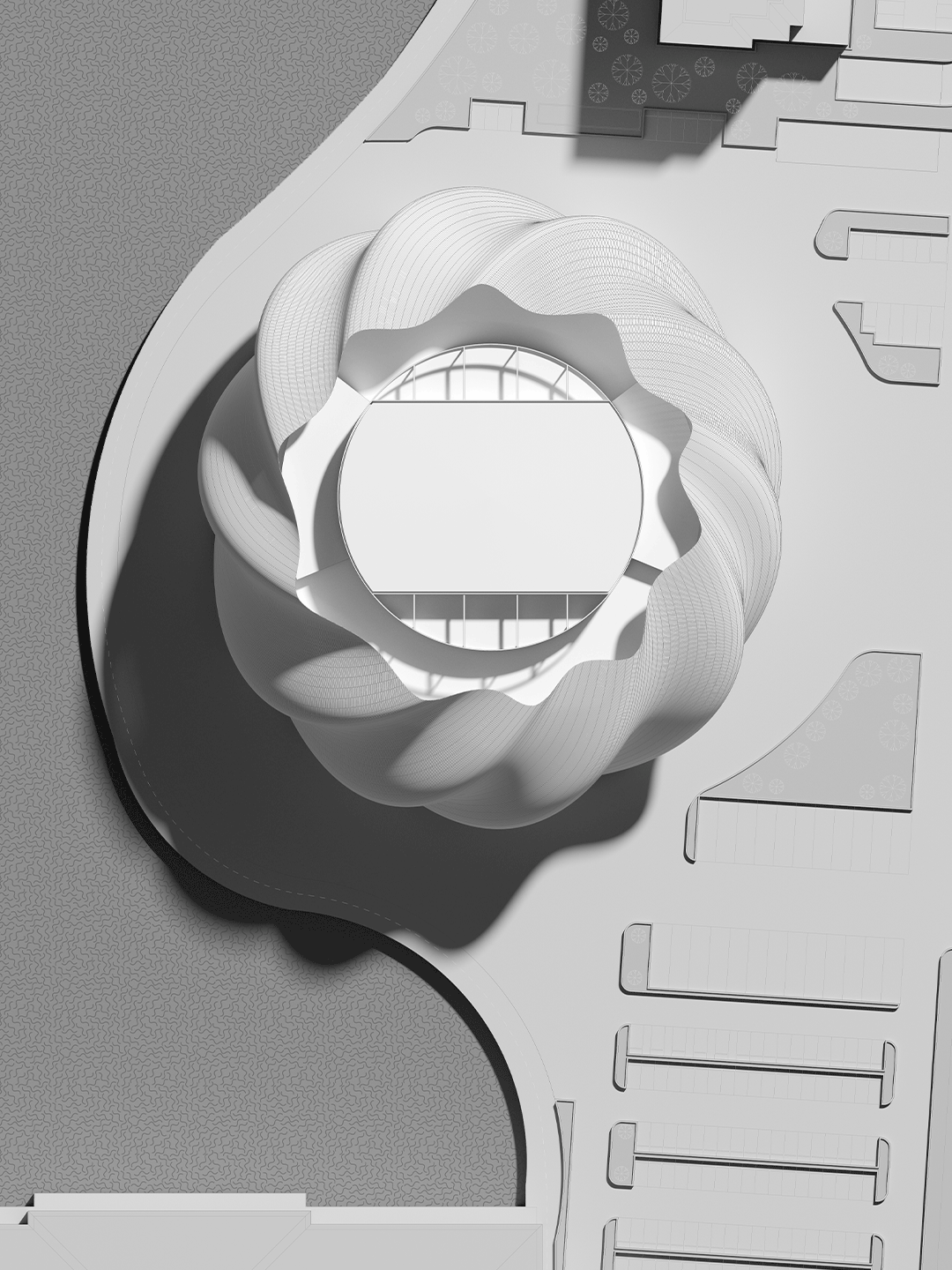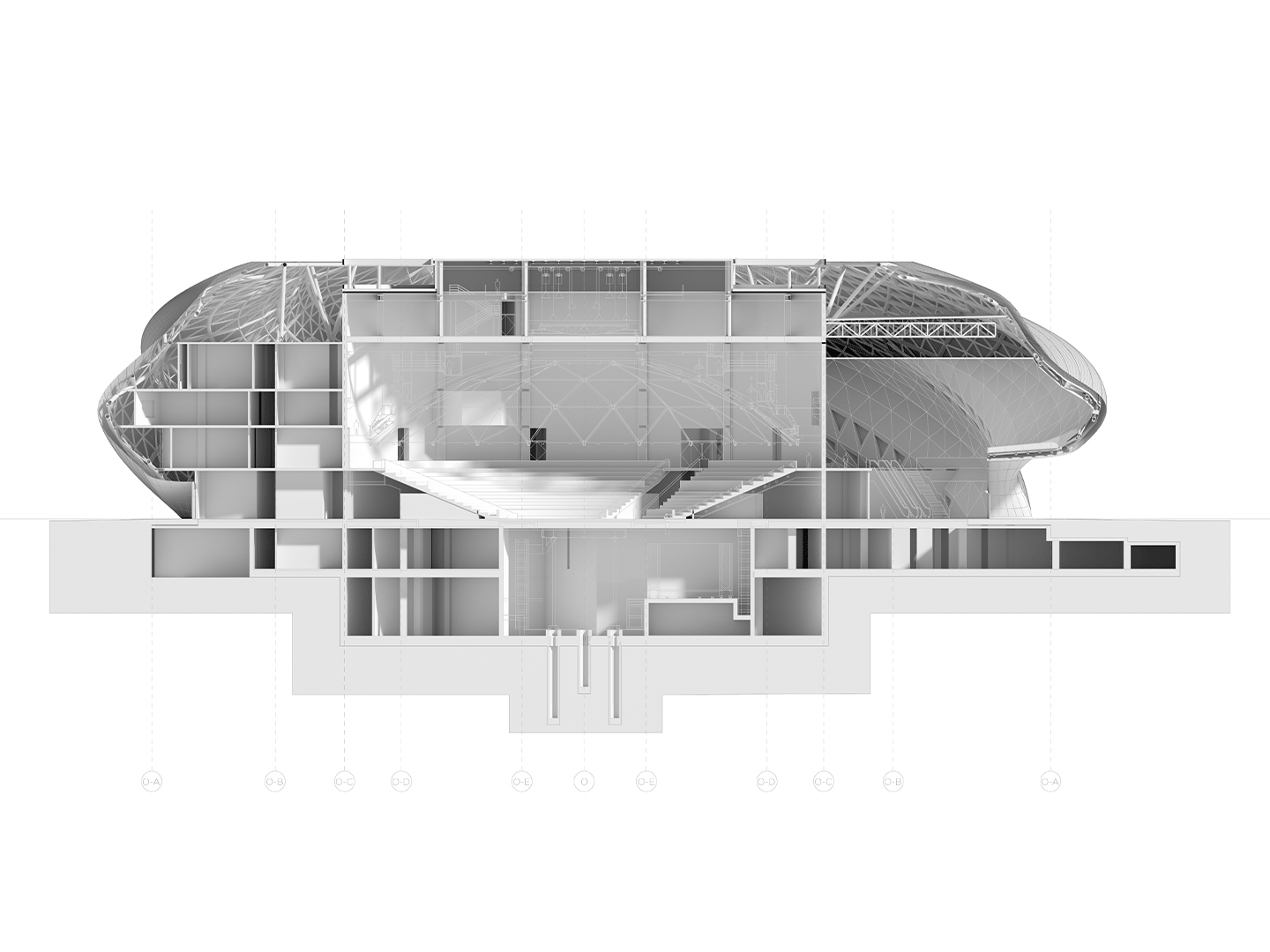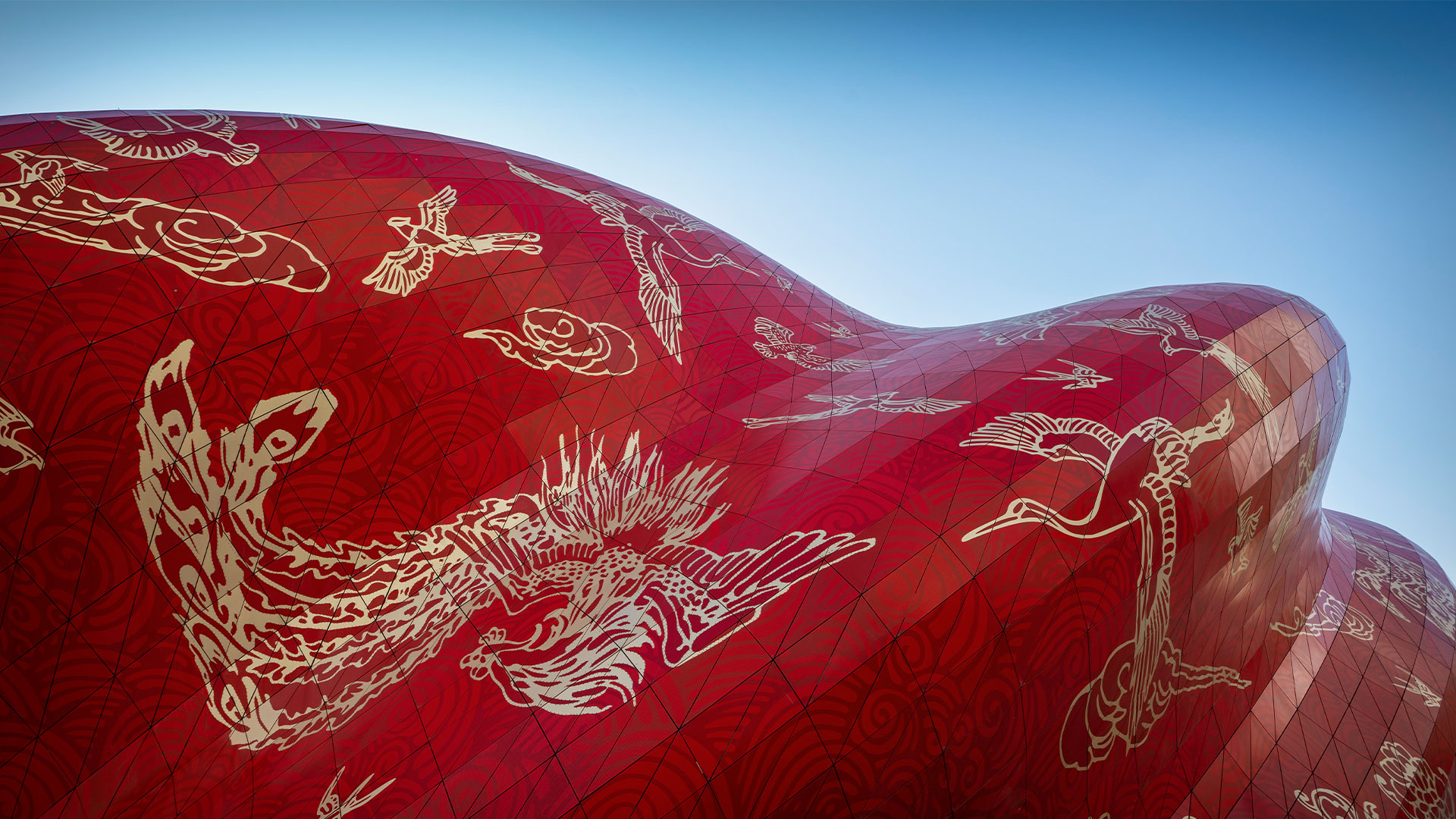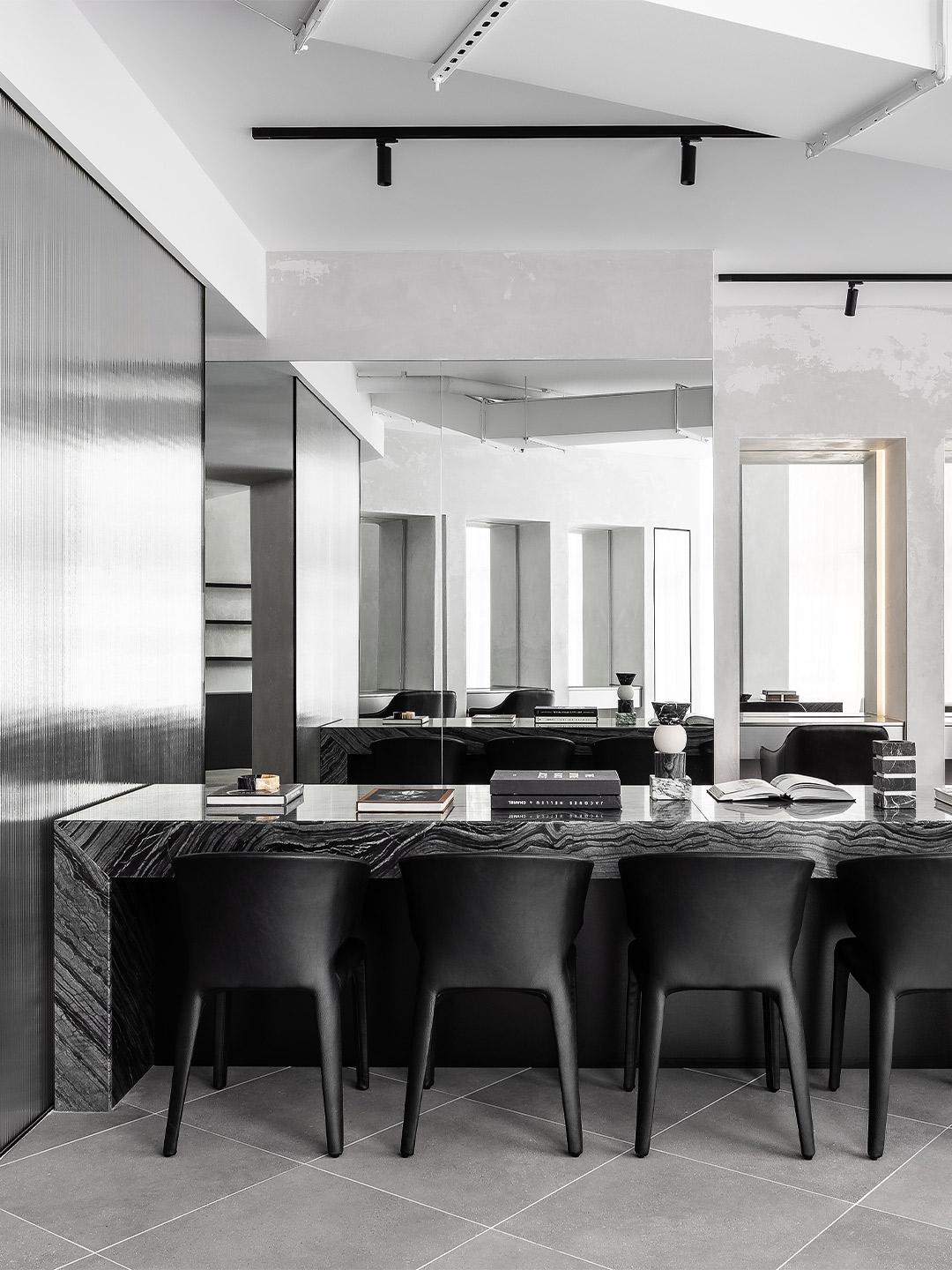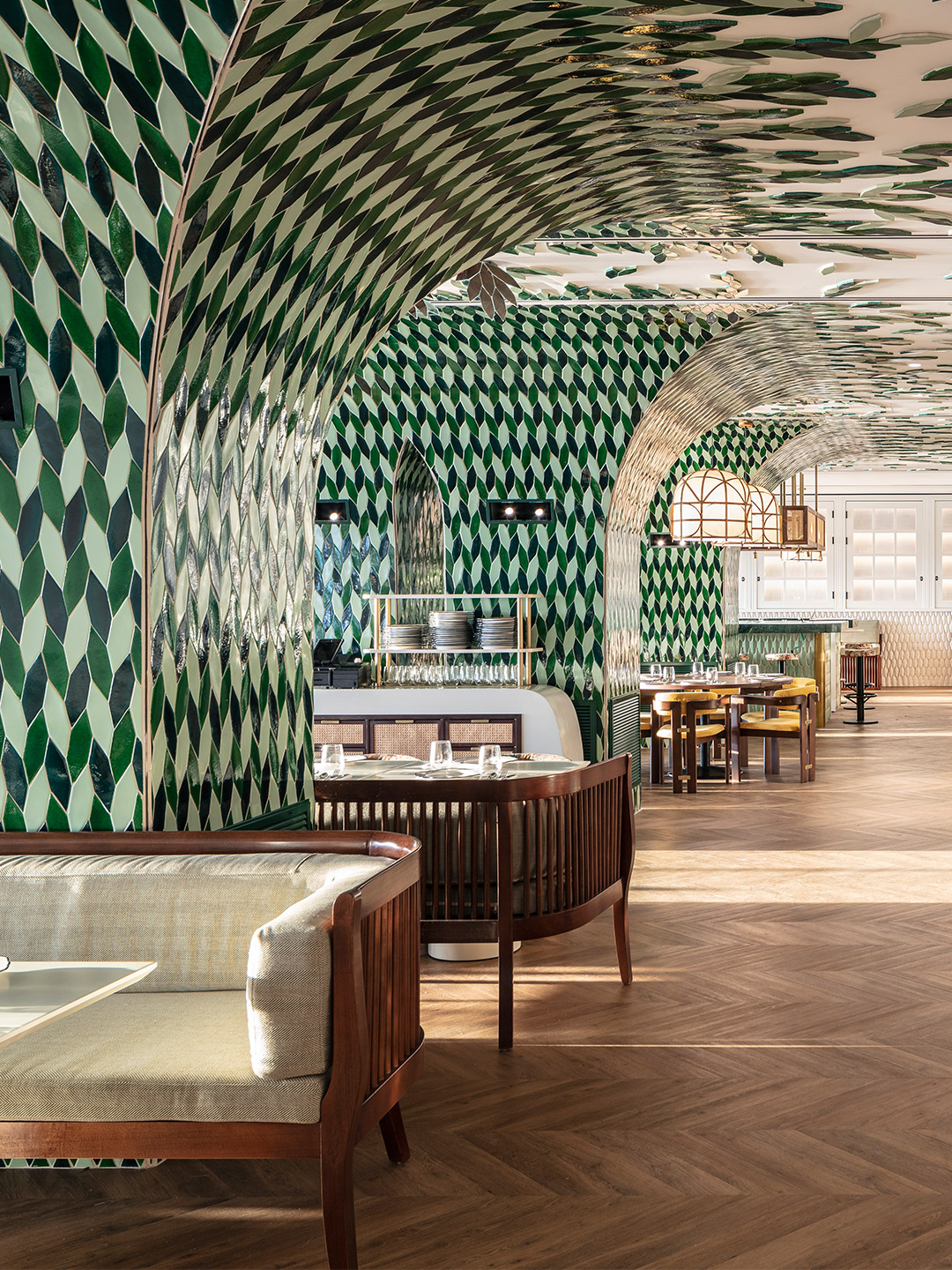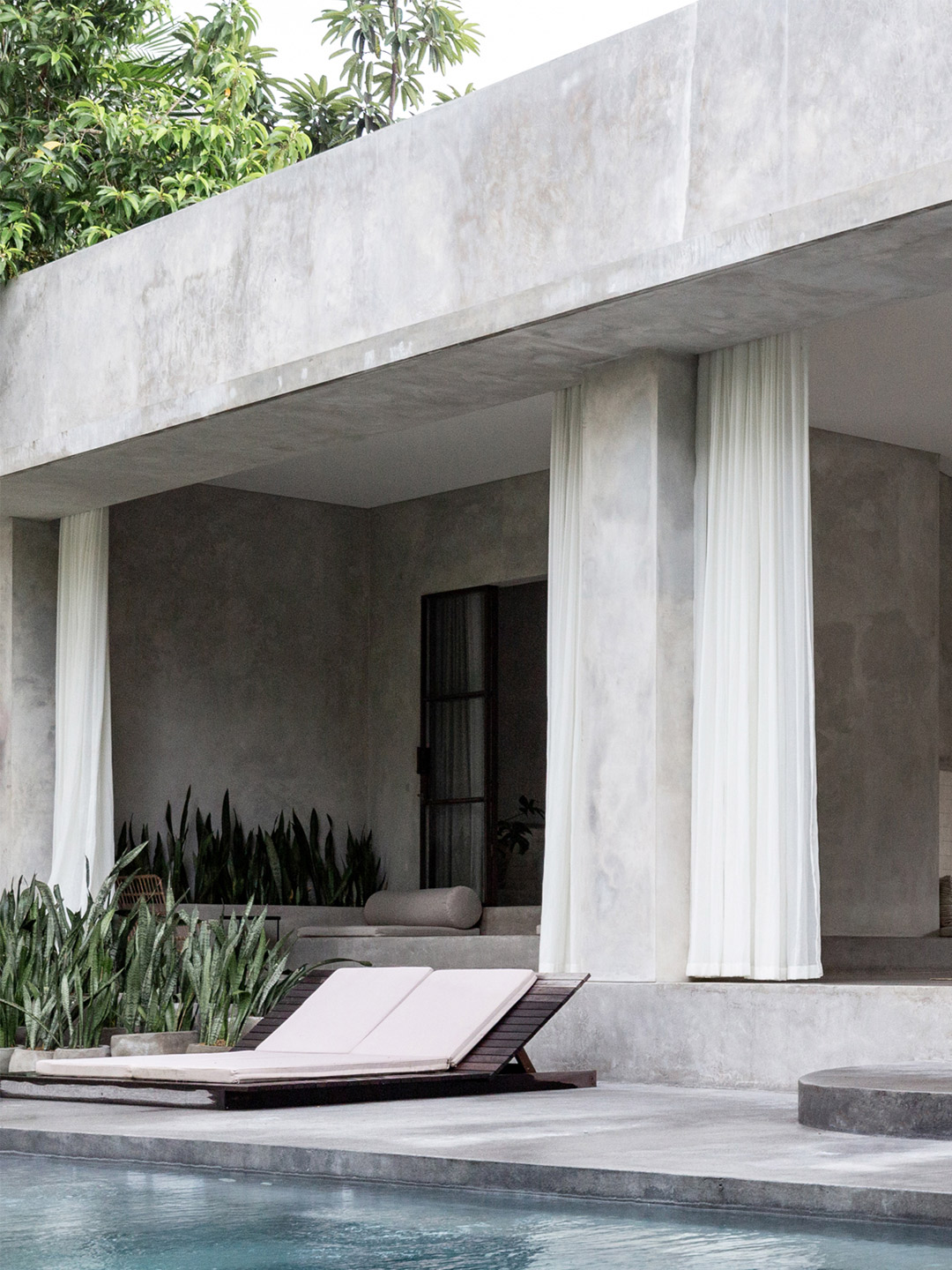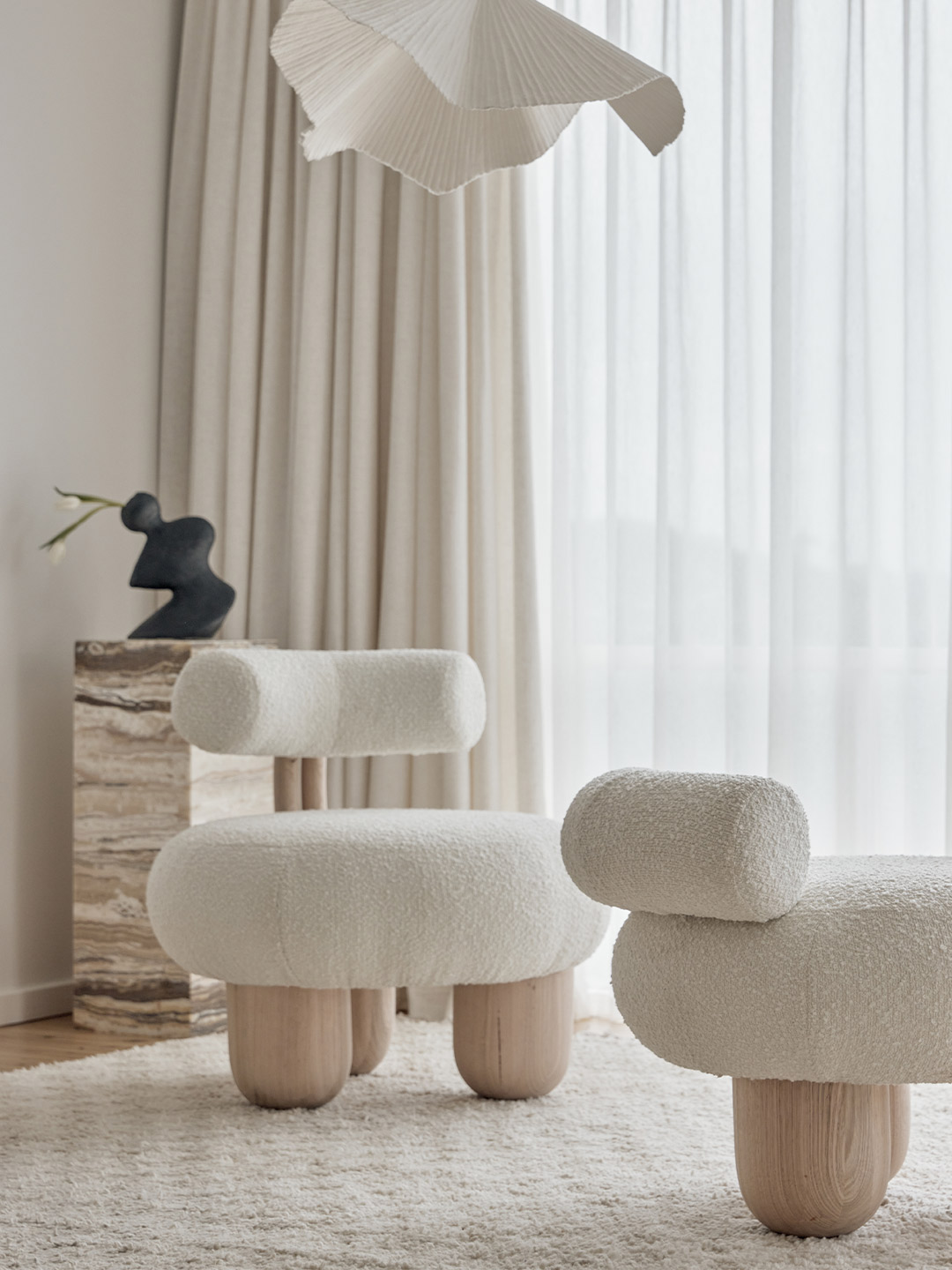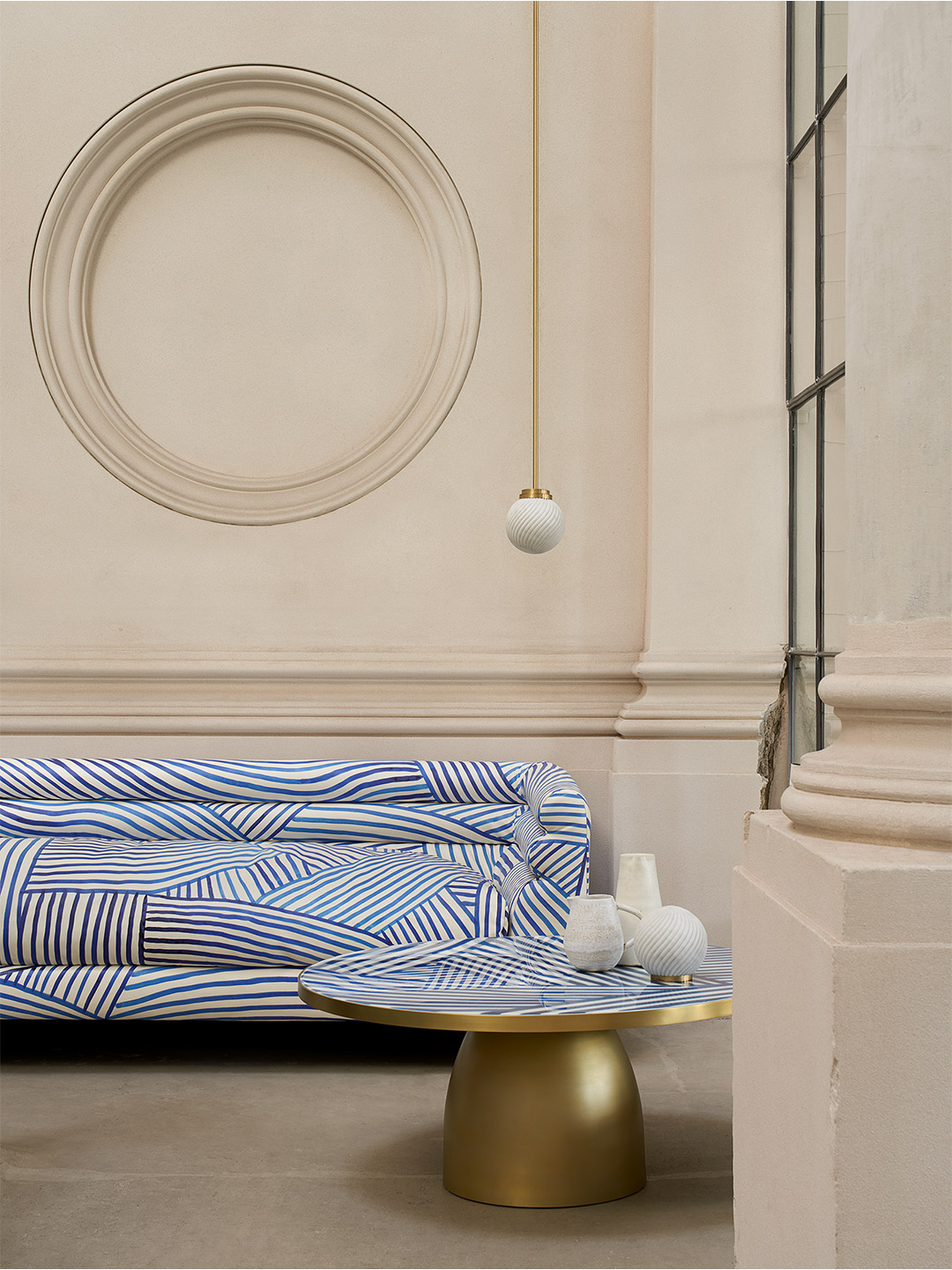In Guangzhou, China, the 2000-seat performance theatre by Steven Chilton Architects is ready to welcome world-class productions to its stage in early 2021. Officially called the Sumac Guangzhou Grand Theatre, the centre’s mission to cultivate theatrical talent is expressed through the imagery applied to the surface of its silk-inspired cladding. “We were influenced by a beloved local myth [known as] 100 Birds Paying Homage to the Phoenix,” says architect Steven Chilton. “The Phoenix or ‘Fenghuang’ stands for virtue and grace whilst the allegory signifies notions of recognition, leadership and mentoring.”
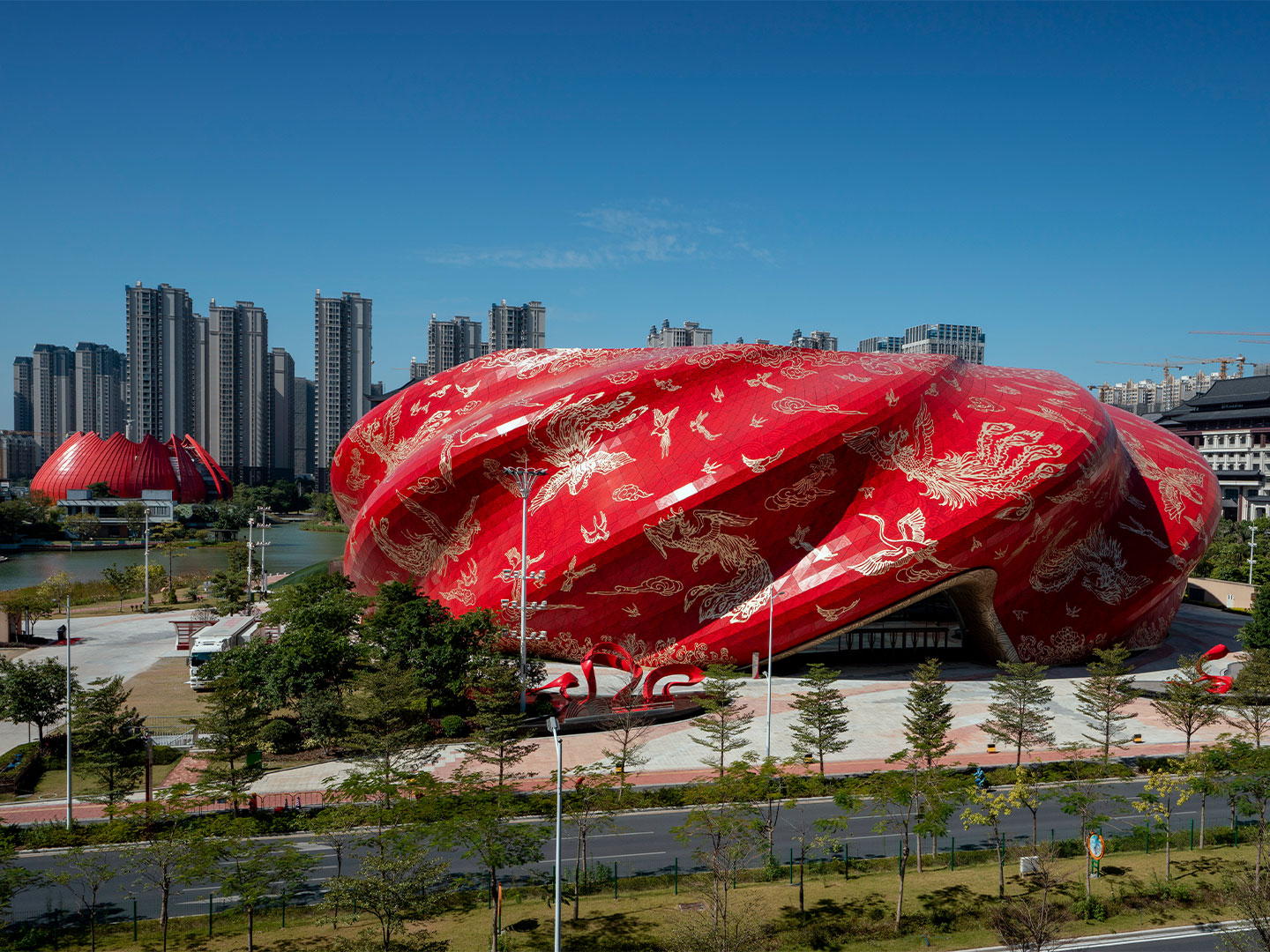
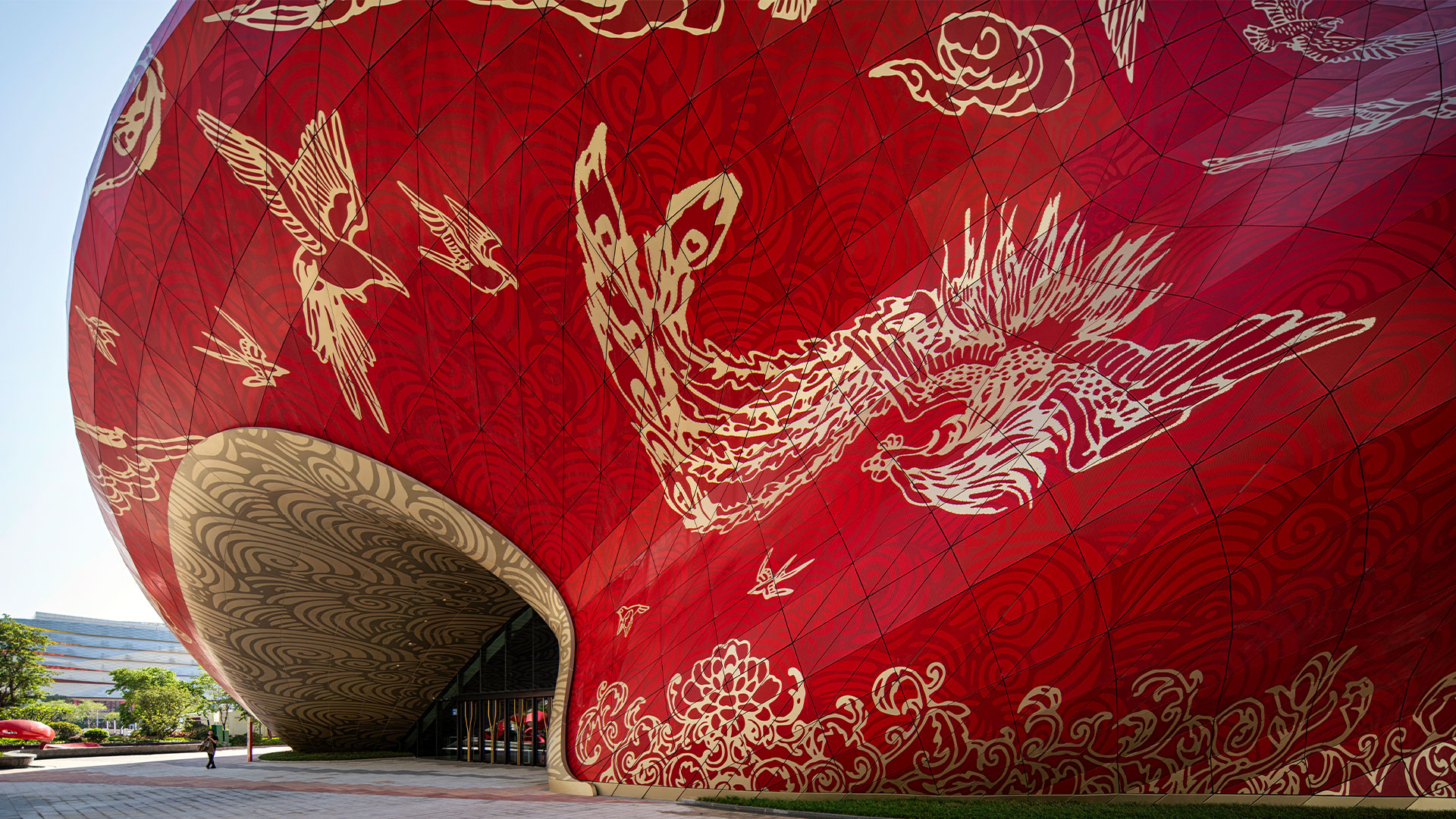
Using illustrations created by artist Zhang Hongfei, the architecture practice digitised and interpreted the hand drawings before applying each figure to the building’s perforated aluminium panels. “We developed a compositional style inspired by tattoo art aesthetics,” says Steven, who placed key characters such as the phoenix in prominent positions on the “body” of the theatre’s undulating facade. Secondary figures such as birds, cloud formations and floral motifs were arranged to occupy the spaces in-between.
As initially reported by Daily Architecture News, the building’s mesmerising ring-shaped shell is inspired by the drape of Chinese silk, a sumptuous textile which has a long-running connection with this part of China. “Guangzhou is the birthplace of the Silk Road on the sea and has been a significant centre for the arts and trading since the Han Dynasty,” says the architect.
The cladding which gives the building its fluid form is composed of thousands of perforated aluminium panels, coloured in traditional red and gold. The panels are supported by a complex structure of concealed steel tubes “that work interdependently with the concrete superstructure supporting the theatre floors”.
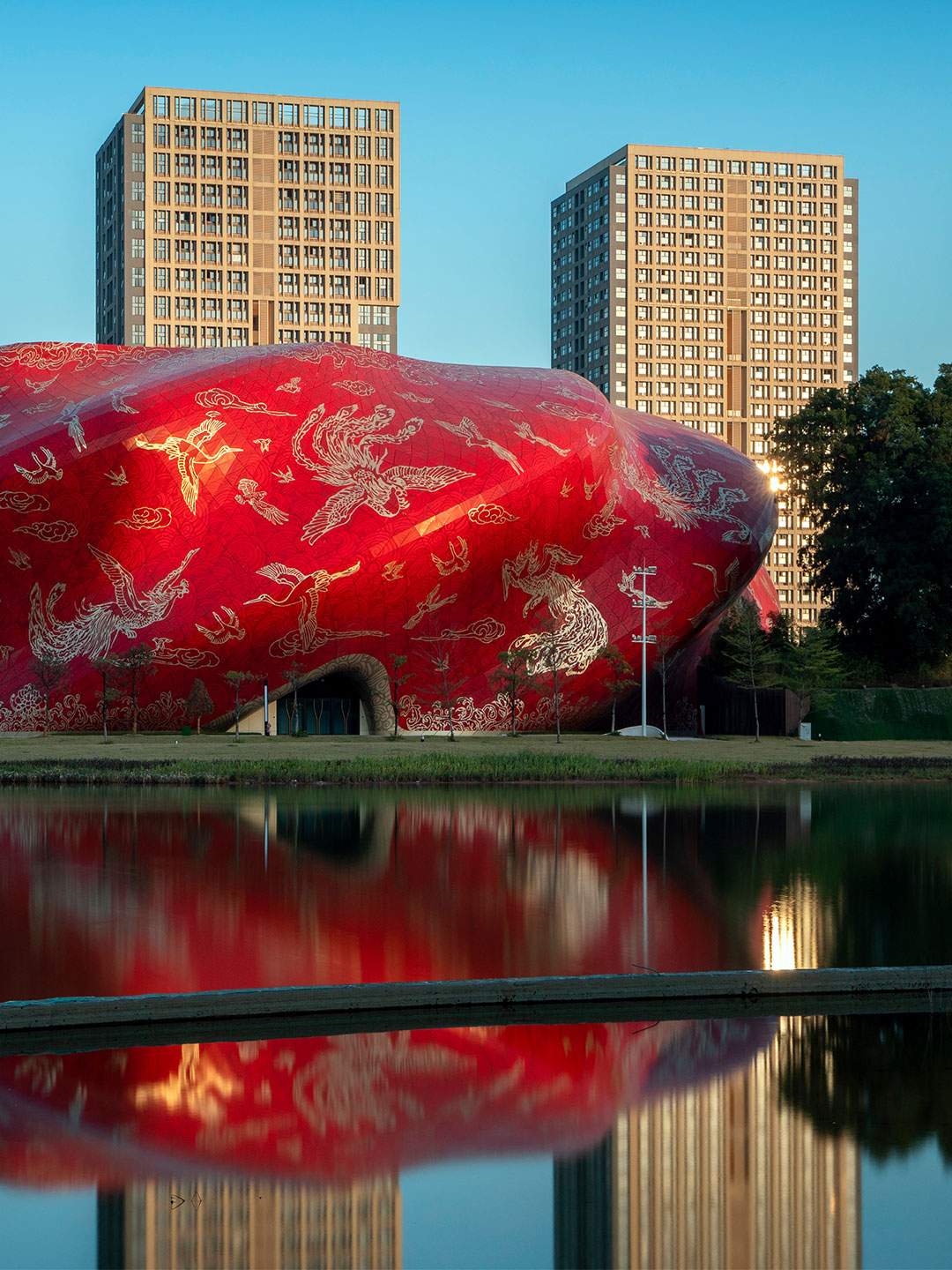
A first look inside the theatre shines the spotlight on the breadth of production types that can be brought to life on stage. The architects say that the immersive performance environment can be transformed from a 360-degree theatre into any number of configurations, partnered with overhead LED screens, facilities for acrobatic acts and a wide range of set-changing mechanisms. The architects add: “While the theatre can be used for more typical productions, it can also be transformed for productions that have spectacular water effects.”
Guangzhou is the birthplace of the Silk Road on the sea and has been a significant centre for the arts and trading since the Han Dynasty.


